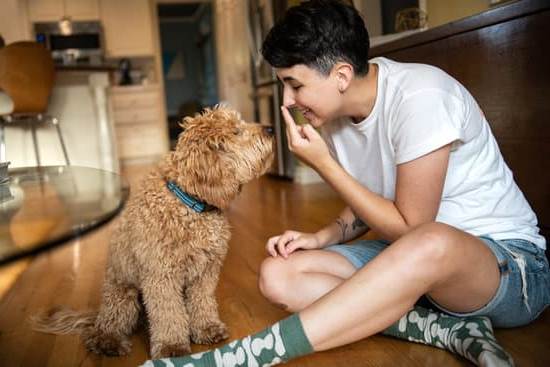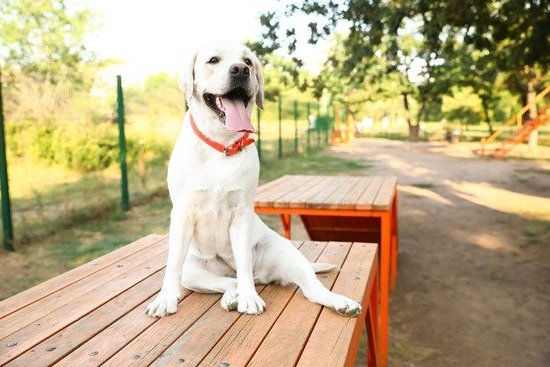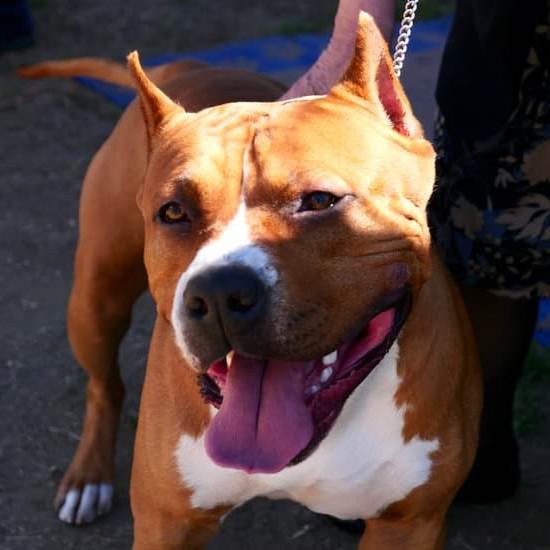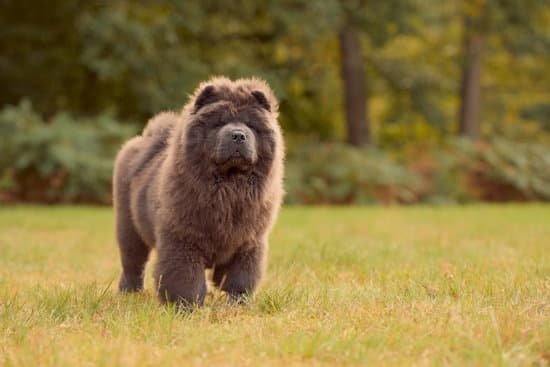Training a dog not to go up stairs is essential for their safety and well-being, as stairs pose various risks and dangers for our four-legged companions. Dogs have a natural curiosity and instinct to explore their surroundings, including climbing stairs, which can lead to accidents and injuries if not properly managed. As responsible pet owners, it is crucial to understand the importance of teaching our dogs to avoid going up stairs to prevent potential harm.
While some may find a dog climbing stairs cute or entertaining, the reality is that it can be hazardous for our furry friends. From the risk of falling and sustaining injuries to potential accidents on steep or slippery steps, there are various dangers associated with dogs navigating staircases. By training them not to go up stairs, we can protect them from harm and ensure their safety within our homes.
This article will delve into the reasons why dogs are drawn to climb stairs, the risks involved in this behavior, and provide practical steps and tips on how to prevent your dog from accessing staircases. By using positive reinforcement techniques, providing alternative solutions for exploration, and maintaining consistency in training, you can effectively guide your dog away from stairs and towards safer areas for play and relaxation.
Let’s explore the importance of training your dog not to go up stairs for their overall well-being.
Understanding Why Dogs Go Up Stairs
Dogs are naturally curious and adventurous animals, which can lead them to explore areas of the house that may not always be safe for them. When it comes to going up stairs, dogs often display a sense of curiosity and a desire to investigate what lies beyond the staircase. This behavior is deeply rooted in their instincts as hunters and explorers, as they are naturally drawn to new challenges and territories.
One possible reason why dogs go up stairs is due to their keen sense of smell. Dogs have an incredible sense of smell that allows them to detect scents that are undetectable to humans.
When they catch a whiff of something intriguing or unfamiliar coming from upstairs, they may be tempted to follow their nose and investigate further by climbing the stairs. This behavior is driven by their natural instincts to hunt or search for potential sources of food or other interesting stimuli.
Another factor that contributes to dogs going up stairs is their playful nature. Dogs are social animals that thrive on interaction and mental stimulation. Climbing stairs can pose a fun challenge for them, especially if they see it as a game or an opportunity for exploration. By understanding these underlying reasons behind why dogs go up stairs, pet owners can better address this behavior through appropriate training methods and strategies.
| Reasons Why Dogs Go Up Stairs | Examples |
|---|---|
| Keen Sense of Smell | Dogs following a scent trail upstairs |
| Playful Nature | Dogs treating stair-climbing as a playful challenge |
Risks and Dangers of Dogs Going Up Stairs
Dogs are naturally curious creatures, and their adventurous spirit can sometimes lead them into risky situations. When it comes to going up stairs, dogs may not always understand the potential dangers that come with it. As responsible pet owners, it is essential to be aware of the risks and dangers of allowing your dog to climb stairs unsupervised.
One of the main concerns when dogs go up stairs is the risk of falling. Stairs can be slippery, especially for dogs with shorter legs or older pets who may struggle with balance. A fall down the stairs can result in serious injuries such as broken bones, sprains, or even concussions. Additionally, some dogs may have difficulty judging the height of each step, leading to missteps and potential accidents.
Injury is another significant risk associated with dogs going up stairs. Dogs can easily injure their paws or nails by slipping on a stair tread or getting caught in between steps.
In more severe cases, excessive climbing of stairs can put a strain on a dog’s joints and muscles, leading to long-term health issues such as arthritis or joint pain. By understanding these risks and dangers, pet owners can take proactive steps to prevent their furry companions from encountering harm.
Steps to Prevent Dogs From Going Up Stairs
Training a dog not to go up stairs is essential for their safety and well-being, especially if they have mobility issues or are prone to accidents. Here are some practical tips and training methods to discourage your furry friend from climbing stairs:
- Install a baby gate or pet barrier at the foot of the stairs to physically block access.
- Use verbal cues such as “no stairs” or “stay” when your dog attempts to climb them.
- Redirect your dog’s attention by offering treats, toys, or engaging in playtime in a different area of the house.
Positive reinforcement is key when training your dog not to go up stairs. Whenever your dog follows the desired behavior of staying away from the stairs, reward them with praise, treats, or affection. This positive association will encourage them to continue obeying your commands.
Consistency and patience are crucial throughout the training process. Be firm in enforcing the rules regarding stair access and avoid giving mixed signals to your dog. Remember that every dog learns at their own pace, so it’s important to remain patient and persistent in your efforts.
By monitoring your dog’s progress and adjusting your strategies accordingly, you can effectively train them not to go up stairs. Keep an eye on their behavior and make modifications to your training methods as needed. With time and dedication, you can successfully teach your dog to steer clear of the stairs for their own safety.
Using Positive Reinforcement
Positive reinforcement is a powerful tool in training dogs and can be especially effective when teaching them not to go up stairs. By using positive reinforcement, you are rewarding your dog for desired behaviors, such as staying away from stairs, which encourages them to repeat those behaviors in the future. This method focuses on promoting good behavior rather than punishing unwanted behavior, creating a positive learning experience for your furry friend.
Building a Positive Association
When training your dog not to go up stairs, it is important to create a positive association with obeying your commands. You can achieve this by using treats, praise, or toys as rewards when your dog listens and follows the rules.
For example, every time your dog avoids going up the stairs when instructed, reward them with a treat or affection. This reinforces the idea that listening to you leads to positive outcomes, making them more likely to continue behaving appropriately.
Establishing Clear Communication
Another benefit of using positive reinforcement is that it helps establish clear communication between you and your dog. Through consistent rewards for desired behavior and gentle redirection when necessary, you are effectively communicating your expectations to your pet.
This clarity helps strengthen the bond between you and your furry companion and facilitates a deeper understanding of what is considered acceptable behavior. With clear communication, your dog will learn faster and be more motivated to follow your guidance on not going up stairs.
Providing Alternative Solutions
Dogs are naturally curious creatures, and their instinct to explore can sometimes lead them to go up stairs, which can pose risks to their safety. To prevent your furry friend from climbing stairs, it is essential to provide alternative areas or activities that can redirect their attention and energy.
One effective way to achieve this is by creating a designated play area on the same level as the rest of the house where your dog can engage in physical and mental stimulation.
Incorporating interactive toys, such as puzzle feeders or treat-dispensing toys, in the designated play area can keep your dog engaged and entertained without the need to venture up stairs. These toys not only provide mental stimulation but also encourage physical activity, which helps in redirecting your dog’s energy away from climbing stairs. Additionally, engaging in playtime with your dog in the designated area can strengthen your bond and reinforce positive behaviors.
Another alternative solution to prevent dogs from going up stairs is to establish a routine that includes outdoor activities like walks or play sessions in a safe and secure environment. Regular exercise not only helps in keeping your dog physically fit but also provides mental stimulation that can reduce their curiosity toward stair climbing.
By setting aside time for outdoor activities, you are providing an outlet for your dog’s need for exploration and adventure while ensuring their safety and well-being.
Ensuring a safe and stimulating environment for your dog is key in training them not to go up stairs. By incorporating alternative solutions like designated play areas, interactive toys, and outdoor activities into their daily routine, you can effectively redirect their energy and curiosity away from stair climbing. Consistency in implementing these strategies along with patience will help reinforce positive behaviors and ultimately keep your canine companion safe at home.
| Alternative Solutions | Information |
|---|---|
| Designated Play Areas | Create a space on the same level with engaging toys |
| Outdoor Activities | Incorporate regular walks or play sessions for physical exercise |
Consistency and Patience in Training
Consistency and patience are key when it comes to training your dog not to go up stairs. It’s important to remember that behavior change takes time, especially when working with animals. Dogs, like humans, need time to learn new behaviors and habits, so it’s essential to be patient throughout the training process. Additionally, being consistent in your approach will help reinforce the desired behavior and prevent confusion for your furry friend.
Setting Clear Boundaries
One way to maintain consistency in training is by setting clear boundaries for your dog. Make sure everyone in your household is on the same page when it comes to allowing or disallowing stair access for your pet. Consistency in enforcing these boundaries will help your dog understand what behavior is expected of them.
Reinforcing Good Behavior
Consistency also means reinforcing good behavior consistently. When your dog follows the desired behavior of not going up stairs, be sure to reward them with praise, treats, or affection. Positive reinforcement will help your dog associate staying off the stairs with positive outcomes, making them more likely to repeat the behavior in the future.
Practice Makes Perfect
Training a dog not to go up stairs requires patience and practice. Be prepared to dedicate time each day to work on this training goal with your pet. Remember that every dog is different and may progress at their own pace, so stay patient and continue practicing until they fully understand what is expected of them. With time, consistency, and patience, you can successfully train your dog not to go up stairs for their safety and well-being.
Monitoring Progress and Adjusting Strategies
When training your dog not to go up stairs, it is crucial to monitor their progress and behavior closely. Dogs may require different approaches based on their temperament, age, and past experiences. By keeping a close eye on how your dog reacts to the training methods, you can tailor your strategies accordingly for better results.
Here are some ways to monitor your dog’s progress effectively:
- Observation: Watch closely how your dog behaves around stairs and if they show any signs of wanting to climb them.
- Tracking: Keep a journal or log of your training sessions, noting any improvements or setbacks in your dog’s behavior.
- Feedback: Pay attention to any feedback from your dog, such as body language or vocal cues, that may indicate their feelings towards the stairs.
Adjusting your training strategies is essential in ensuring that your dog successfully learns not to go up stairs. Some dogs may respond better to certain methods over others, so being flexible and adaptable in your approach is key.
- Modify Techniques: If a particular training method does not seem effective, try different techniques or tools such as barriers or distractions to deter your dog from going up stairs.
- Seek Professional Help: If you encounter difficulties in training your dog not to go up stairs, consider consulting a professional trainer or behaviorist for expert guidance.
- Stay Patient: Remember that every dog learns at their own pace, so be patient and persistent in your efforts to teach them this important safety skill.
Conclusion
Training your dog not to go up stairs is crucial for their safety and well-being. While it may seem like a harmless behavior, the risks and dangers of allowing your dog to climb stairs can lead to serious consequences such as falls, injuries, or accidents. By understanding why dogs are naturally curious and drawn to stairs, pet owners can take proactive steps to prevent these incidents from happening.
Using positive reinforcement techniques and providing alternative areas for exploration are effective ways to discourage your dog from going up stairs. Consistency and patience in training are key factors in successfully teaching your dog this important behavior. It is essential to monitor your dog’s progress and adjust training strategies as needed to ensure lasting results.
Ultimately, the goal of training your dog not to go up stairs is to protect them from potential harm and create a safe environment for them to thrive in. By investing time and effort into this training process, pet owners can help their furry companions lead healthier and happier lives. Remember, the safety and well-being of your dog should always be a top priority in all aspects of their care and training.
Frequently Asked Questions
How Do I Stop My Dog From Going Up Stairs?
Training your dog to not go upstairs requires patience and consistency. Start by using positive reinforcement, like treats or praise, when your dog stays downstairs. You can also try using baby gates to block access to the stairs and redirecting their attention to toys or activities downstairs.
Can You Teach a Dog Not to Go Upstairs?
Yes, you can teach a dog not to go upstairs through consistent training and positive reinforcement. Start by setting clear boundaries and rules for your dog regarding the stairs. Use commands like “stay” or “downstairs” along with rewards to encourage good behavior. With time and repetition, your dog will learn to stay downstairs.
How Do I Get My Dog to Stay Downstairs?
To get your dog to stay downstairs, establish clear rules and boundaries early on through training. Use positive reinforcement, like treats or praise, when your dog stays downstairs. Consistency is key in reinforcing the behavior you want from your pet. Gradually increase the duration they stay downstairs over time as they become more accustomed to it.

Welcome to the blog! I am a professional dog trainer and have been working with dogs for many years. In this blog, I will be discussing various topics related to dog training, including tips, tricks, and advice. I hope you find this information helpful and informative. Thanks for reading!





